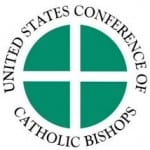 Sister Mary Ann Walsh of the USCC looks at some signs of the times regarding Catholics and social media and provides useful links of interest to Catholics.
Sister Mary Ann Walsh of the USCC looks at some signs of the times regarding Catholics and social media and provides useful links of interest to Catholics.
A recent sign of technology in church was a man watching the Olympics on his Smartphone. He may be among those very few Catholics who, the Public Religion Research Institute says, “incorporate technology into their practice of worship.”bPublic Religion’s July 2012 report finds that few Americans use social technology for religion and that Catholics especially lag in this area: while 19 percent of Evangelical Christians reported having posted something about being in church on Facebook, only six percent of mainline Protestants and two percent of Catholics have done so. It added that while a quarter of Evangelicals have downloaded or listened to a sermon on line, just six percent of mainline Protestants and Catholics have done so.
However, there is much proof that Catholics are present in the new media world via blogs, Facebook, Twitter, web pages and other forms of social media.
The U.S. bishops’ website, www.usccb.org attracts almost 100,000 visitors each day to its site for liturgical readings of the day,www.usccb.org/bible/readings. These visitors see and hear a brief reflection on the readings at www.usccb.org/bible/reflections.
The bishops’ Facebook page, www.facebook.com/usccb, boasts about 40,000 followers and is growing. Posts on USCCBlog, found athttp://usccbmedia.blogspot.com find their way into other corners of the blogosphere, both through church blogs, such as America Magazine’s “In all things…” and blogs in the secular arena, including Huffington Post, Politico, Washington’s Post’s “On Faith” and USA Today’s “Faith & Reason.”
A recent social media foray is the church’s religious liberty texting campaign. The bishops urge people to text “Freedom” or Libertad” to 377377. Texters can sign up for brief messages about religious freedom, a key issue now.
Church blogs abound. Gossip blogs offer “inside” information, such as who might become a bishop next. Several blogs feed a liberal or conservative base, and, I fear, stoke church polarization in this election year.
Some bishops blog. Bishop Gerald Kicanas of Tucson, Arizona, files a “Monday Memo” at www.tucsondiocese.org. Cardinal Timothy Dolan of New York often makes news at http://blog.archny.org. Cardinal Sean O’Malley of Boston lets people know what he’s doing on his travels with www.cardinalseansblog.org. Others, such as Bishop Christopher Coyne, apostolic administrator of the Archdiocese of Indianapolis, and Bishop Anthony Taylor of Little Rock, Arkansas, post homilies, or at least 140 characters from their homilies, on Facebook or Twitter.
Catholics who use the Web for spiritual development can go to many sites, including not only the USCCB site but also sites geared to meditation, such as the Irish Jesuits’ http://www.sacred space.ie and Franciscan Father Richard Rohr’s Center for Action and Contemplation in Albuquerque, New Mexico, www.cac.org.
The church has a long history of wise use of media technology. Once Johannes Gutenberg invented movable type in the mid-15th century, the first book off his printing press was the Bible. Radio became popular in the United States in the early 20th century, and one of its first shows was “The Catholic Hour,” which ran from 1930-1950, and featured the priest/preacher Fulton Sheen. Television surged into popularity in the fifties and Sheen became an Emmy-Award-winning TV star for his program “Life Is Worth Living,” 1951-1957. The syndicated “Fulton Sheen Program” followed, 1961-1968. Given this history, despite the Public Religion Research Institute data, the Catholic Church won’t lag for long in use of the newest technological means of communication, social media.
Tags: Fulton Sheen, social media and networks, USCC
